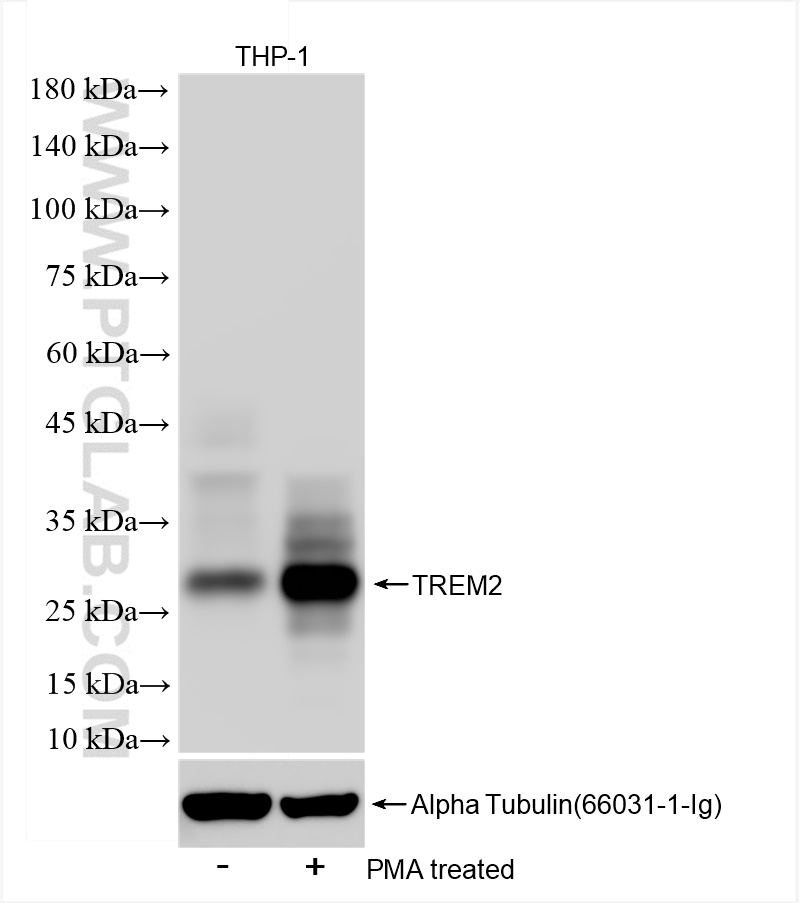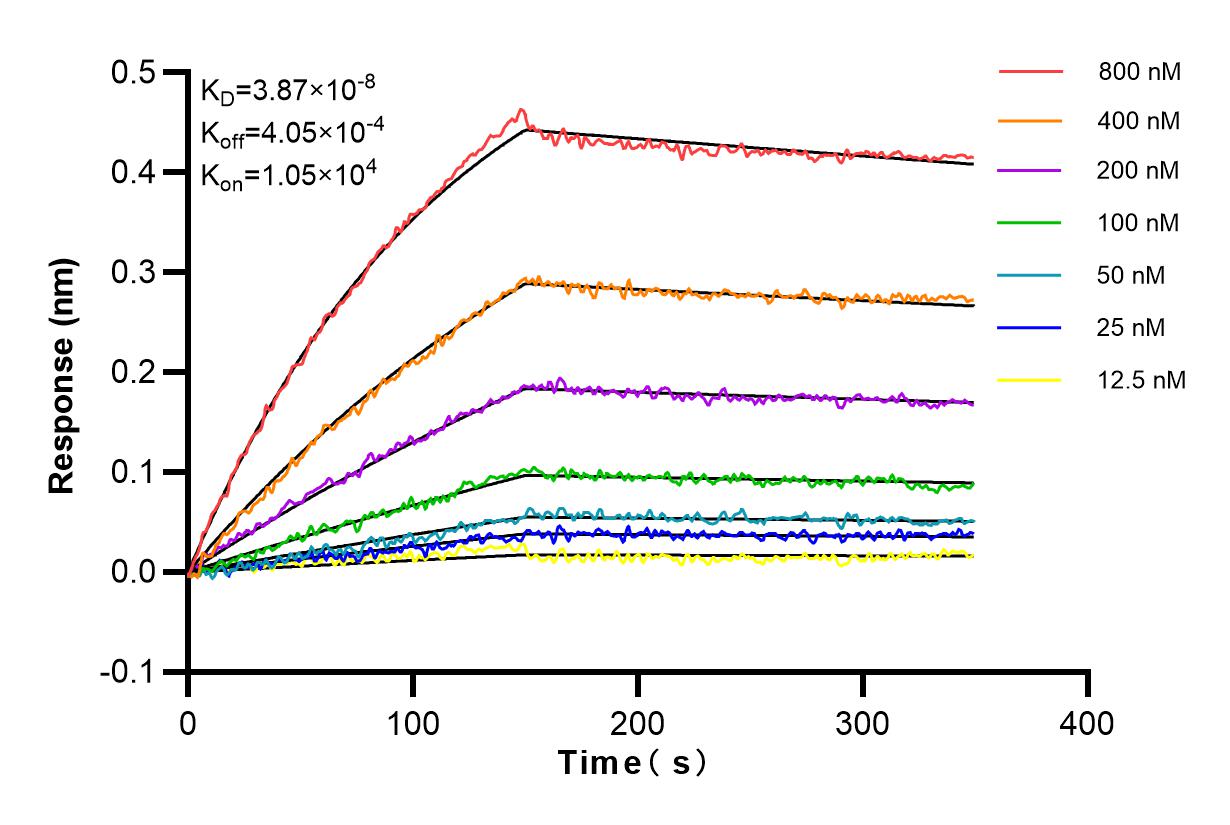验证数据展示
经过测试的应用
| Positive WB detected in | PMA treated THP-1 cells, THP-1 cells |
推荐稀释比
| 应用 | 推荐稀释比 |
|---|---|
| Western Blot (WB) | WB : 1:2000-1:10000 |
| It is recommended that this reagent should be titrated in each testing system to obtain optimal results. | |
| Sample-dependent, Check data in validation data gallery. | |
产品信息
83438-6-RR targets TREM2 in WB, ELISA applications and shows reactivity with human samples.
| 经测试应用 | WB, ELISA Application Description |
| 经测试反应性 | human |
| 免疫原 | Fusion Protein 种属同源性预测 |
| 宿主/亚型 | Rabbit / IgG |
| 抗体类别 | Recombinant |
| 产品类型 | Antibody |
| 全称 | triggering receptor expressed on myeloid cells 2 |
| 别名 | Trem2c, Trem2b, Trem2a, TREM-2, TREM 2 |
| 计算分子量 | 222 aa, 25 kDa |
| 观测分子量 | 26-32 kDa |
| GenBank蛋白编号 | BC032362 |
| 基因名称 | TREM2 |
| Gene ID (NCBI) | 54209 |
| RRID | AB_3671079 |
| 偶联类型 | Unconjugated |
| 形式 | Liquid |
| 纯化方式 | Protein A purfication |
| UNIPROT ID | Q9NZC2 |
| 储存缓冲液 | PBS with 0.02% sodium azide and 50% glycerol , pH 7.3 |
| 储存条件 | Store at -20°C. Stable for one year after shipment. Aliquoting is unnecessary for -20oC storage. |
背景介绍
TREM2 (triggering receptor expressed on myeloid cells 2) is a cell surface receptor belongs to TREM family that is expressed on osteoclast, dendritic cells, macrophages, nature killers, neutrophils and microglia (PMID: 19302484). TREM2 is localized predominantly in the Golgi complex, but also shuttles to and from the cell surface in endocytic and exocytic vesicles (PMID: 16675145). TREM2 associates with DAP12 to initiate the intracellular signalling cascade via an immunoreceptor tyrosine-based activation motif (ITAM) domain and tyrosine-kinases (PMID: 23977213).
实验方案
| Product Specific Protocols | |
|---|---|
| WB protocol for TREM2 antibody 83438-6-RR | Download protocol |
| Standard Protocols | |
|---|---|
| Click here to view our Standard Protocols |


